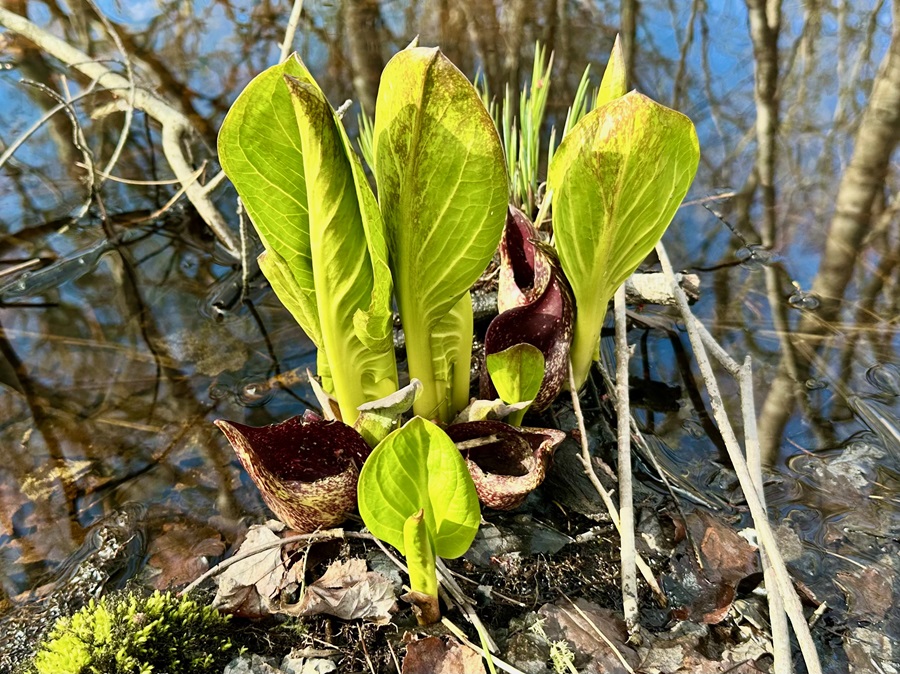
It’s officially spring at the Eddy Sisters Community Garden in Brewster when wafts of the scent of rotting flesh begin to carry over from the property’s adjoining bog, where the mottled purple beaks of Symplocarpus foetidus, or skunk cabbage, emerge to ring in the season with their cadaverous funk. These foul-smelling spathes — hooded bracts that conceal flowers within — are also thermogenic, able to produce enough heat to melt any late-season snow or ice that might otherwise inhibit their appearance. The interior atmosphere of warm stink is a welcoming haven for flies and other lovers of putrescence who then set about pollinating the plant’s tiny blooms.
